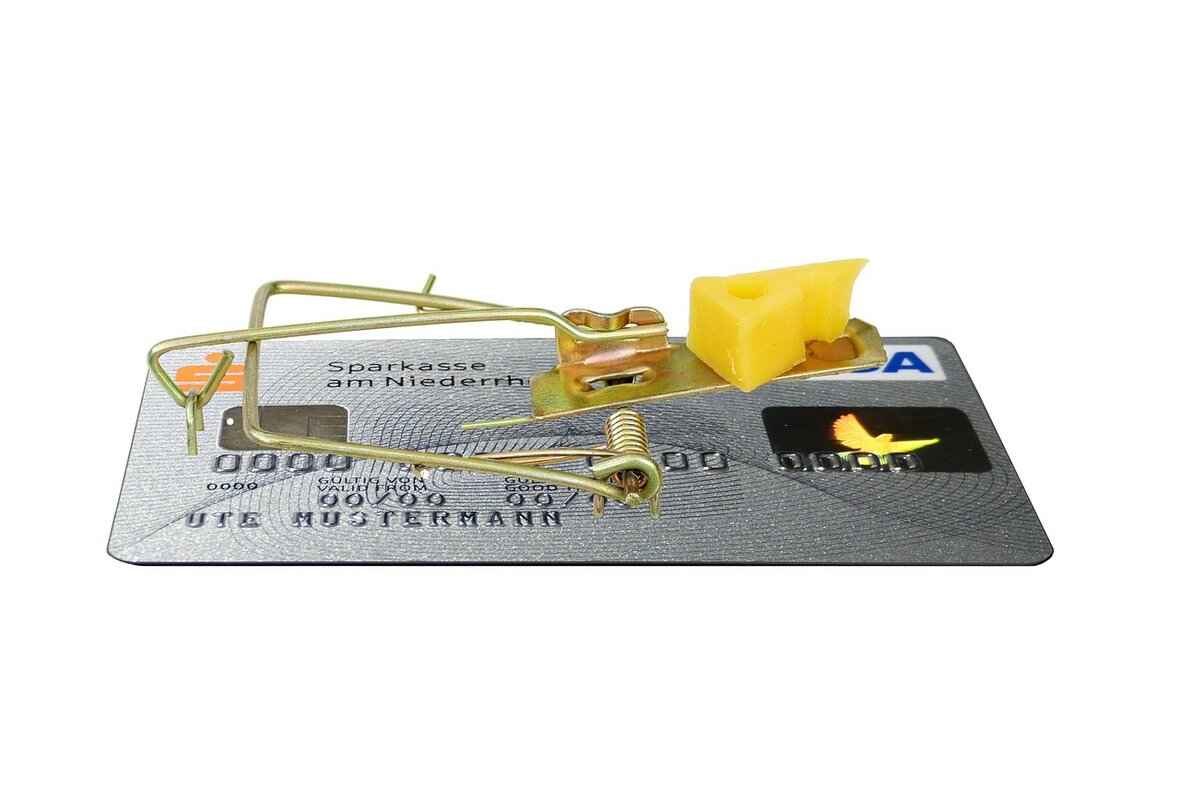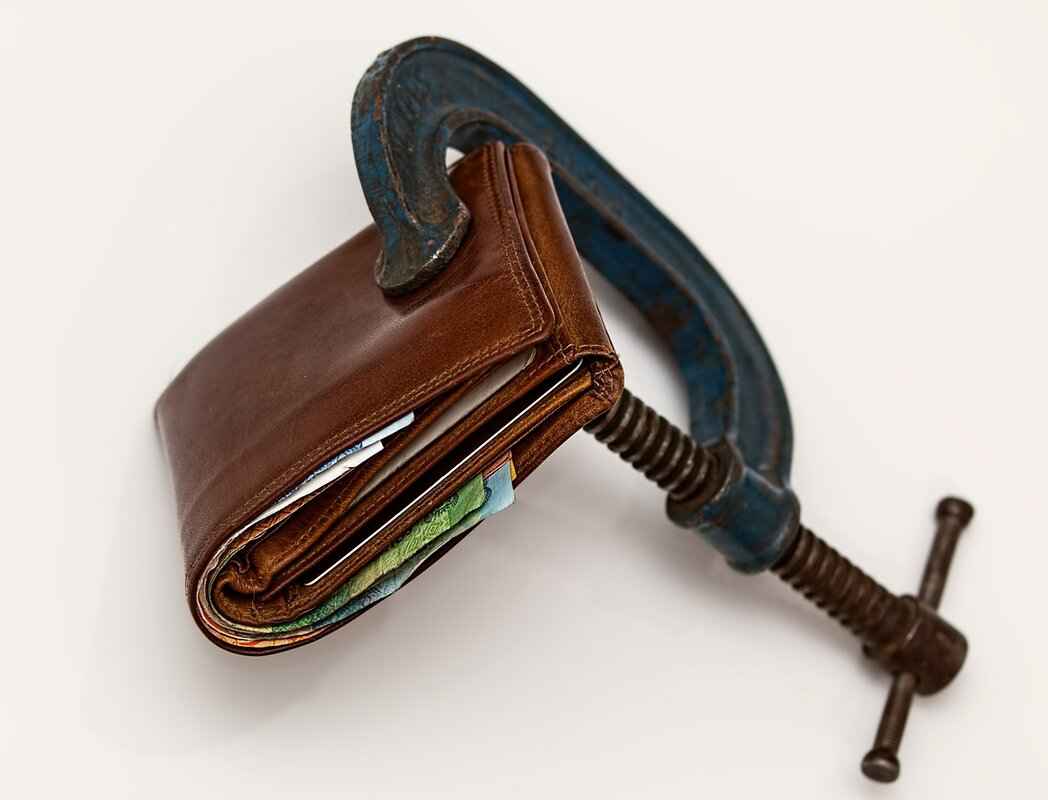Bankruptcy protection is a vital legal resource for individuals and businesses grappling with overwhelming debt. It serves as a structured process that not only provides relief but also facilitates a fresh financial start. This article delves into the intricacies of bankruptcy protection, highlighting its types, processes, and implications, while offering expert insights and practical advice.
Understanding Bankruptcy Protection
Bankruptcy protection is designed to assist those in dire financial situations by allowing them to reorganize or eliminate their debts. This legal mechanism ensures that debtors are treated fairly while also protecting the rights of creditors. By filing for bankruptcy, individuals and businesses can halt collection actions, giving them the breathing room needed to develop a plan for financial recovery.
Types of Bankruptcy: Chapter 7 vs. Chapter 13
There are several types of bankruptcy, but Chapter 7 and Chapter 13 are the most common. Each type has distinct eligibility requirements and outcomes:
- Chapter 7 Bankruptcy: Often referred to as liquidation bankruptcy, this option allows debtors to discharge most unsecured debts. It is particularly beneficial for those with limited income and significant debt.
- Chapter 13 Bankruptcy: Known as reorganization bankruptcy, this type enables individuals to create a manageable repayment plan over three to five years, making it ideal for those with a steady income.
Chapter 7 Bankruptcy Explained
In Chapter 7 bankruptcy, debtors can eliminate various unsecured debts, including credit card balances and medical bills. However, they must pass a means test, which evaluates their income against the median income in their state. If they qualify, the process involves filing a petition, attending a creditors’ meeting, and liquidating non-exempt assets, which may be sold to repay creditors.
Chapter 13 Bankruptcy Overview
Chapter 13 bankruptcy allows individuals to retain their assets while repaying debts through a court-approved plan. This option is advantageous for those who want to avoid foreclosure or repossession and have a stable income to support their repayment plan. The process begins with filing a petition and proposing a repayment plan to the court.
Benefits of Filing for Bankruptcy
Filing for bankruptcy offers several advantages:
- Immediate Relief from Creditors: Upon filing, an automatic stay is enacted, halting all collection actions and lawsuits against the debtor.
- Debt Relief: Bankruptcy can lead to the discharge of unsecured debts, providing a fresh start.
- Rebuilding Credit: While bankruptcy impacts credit scores, it can also serve as a catalyst for rebuilding credit through diligent financial practices.
Common Misconceptions About Bankruptcy
Despite its benefits, numerous myths surround bankruptcy:
- Stigma and Reality: Many individuals fear the stigma associated with bankruptcy, but it is a legal right designed to help those in financial distress.
- Impact on Assets: A common misconception is that bankruptcy results in losing all assets. In reality, many individuals retain essential property through exemptions.
How to File for Bankruptcy: Step-by-Step Guide
Filing for bankruptcy involves several critical steps:
- Consulting a Bankruptcy Attorney: Engaging a qualified attorney ensures compliance with legal requirements and helps navigate the complexities of the process.
- Preparing Necessary Documentation: Gathering financial documents such as income statements, tax returns, and debt records is crucial for a successful filing.
In conclusion, bankruptcy protection serves as a crucial lifeline for those facing financial hardships. By understanding the types, processes, and benefits of bankruptcy, individuals and businesses can make informed decisions that pave the way for a more secure financial future.

Understanding Bankruptcy Protection
is essential for individuals and businesses facing financial challenges. Bankruptcy protection serves as a legal framework designed to assist those overwhelmed by debt. This mechanism not only offers a chance for a fresh financial start but also ensures that creditors are treated fairly throughout the process.
When an individual or business files for bankruptcy, they are essentially seeking relief from their debts, which can be crippling. The process provides a structured way to address these financial obligations, allowing for the possibility of debt discharge or reorganization. This legal protection can be invaluable, especially for those who find themselves unable to meet their financial commitments.
Bankruptcy protection is governed by federal law, and it encompasses various types, each tailored to different financial situations. The two most common types are Chapter 7 and Chapter 13 bankruptcy. Understanding these options is crucial for anyone considering bankruptcy as a solution to their financial woes.
| Type of Bankruptcy | Description | Eligibility |
|---|---|---|
| Chapter 7 | Liquidation bankruptcy that eliminates most unsecured debts. | Must pass a means test based on income and expenses. |
| Chapter 13 | Reorganization bankruptcy that allows for a repayment plan. | Must have a regular income and meet debt limits. |
For those who qualify for Chapter 7, the process typically involves liquidating non-exempt assets to pay creditors. However, many individuals can retain essential property due to exemptions in bankruptcy law. This aspect often alleviates fears associated with the bankruptcy process.
On the other hand, Chapter 13 bankruptcy is designed for individuals with a regular income who wish to retain their assets while repaying their debts over a specified period, usually three to five years. This type of bankruptcy allows individuals to create a manageable repayment plan, providing a structured path towards financial recovery.
One of the most significant benefits of filing for bankruptcy is the automatic stay, which halts all collection actions and lawsuits against the debtor upon filing. This immediate relief can provide the breathing room necessary to reorganize finances and begin the recovery process.
Despite the advantages, many misconceptions surround bankruptcy. Common myths include the belief that all assets will be lost or that bankruptcy is a sign of personal failure. In reality, bankruptcy is a legal right designed to help individuals and businesses regain control of their financial situations. Understanding the realities of bankruptcy can empower individuals to make informed decisions rather than succumbing to stigma.
In addition to legal protections, filing for bankruptcy can ultimately serve as a stepping stone towards rebuilding credit. While it may initially impact credit scores negatively, responsible financial behavior post-bankruptcy can lead to improved creditworthiness over time. This aspect is often overlooked but is crucial for individuals aiming to regain financial stability.
For anyone considering bankruptcy, consulting with a qualified bankruptcy attorney is highly recommended. An experienced attorney can provide valuable insights into the options available, guide individuals through the complex filing process, and help prepare necessary documentation, including income statements and debt records.
Filing for bankruptcy is a significant decision that can have lasting implications. By understanding bankruptcy protection and its processes, individuals can navigate their financial difficulties more effectively and work towards a brighter financial future.

Types of Bankruptcy: Chapter 7 vs. Chapter 13
When individuals or businesses find themselves in a situation where debts have become unmanageable, bankruptcy can provide a necessary lifeline. This legal process offers a way for debtors to either eliminate their debts or create a manageable repayment plan. Among the various types of bankruptcy, Chapter 7 and Chapter 13 are the most commonly filed options in the United States.
Both Chapter 7 and Chapter 13 serve distinct purposes and cater to different financial situations. Understanding these differences is crucial for anyone considering bankruptcy as a solution to their financial woes.
- Chapter 7 Bankruptcy: Often referred to as “liquidation bankruptcy,” Chapter 7 allows individuals to discharge most unsecured debts, such as credit card debt and medical bills, providing a fresh start.
- Chapter 13 Bankruptcy: Also known as “reorganization bankruptcy,” Chapter 13 allows individuals with a regular income to create a repayment plan to pay off their debts over three to five years.
To qualify for Chapter 7 bankruptcy, debtors must pass a means test, which evaluates their income against the median income for their state. If their income is below the median, they may qualify for Chapter 7. If it exceeds the median, they may need to consider Chapter 13 instead. Additionally, debtors must not have filed for Chapter 7 in the past eight years.
The process of filing for Chapter 7 involves several key steps:
- Filing a petition with the bankruptcy court.
- Attending a creditors’ meeting, where creditors can ask questions about the debtor’s financial situation.
- Liquidating non-exempt assets to pay creditors, although many individuals retain essential assets due to exemptions.
Chapter 13 is available to individuals with a regular income who can propose a repayment plan. To qualify, debtors must have secured debts under $1,257,850 and unsecured debts under $419,275. This option is particularly beneficial for those looking to keep their homes while catching up on mortgage payments.
The Chapter 13 process involves:
- Filing a petition and a proposed repayment plan with the bankruptcy court.
- Attending a confirmation hearing, where the court approves or modifies the repayment plan.
- Making regular payments to a bankruptcy trustee, who distributes the funds to creditors over the repayment period.
While both Chapter 7 and Chapter 13 provide relief from overwhelming debt, they cater to different financial situations:
| Feature | Chapter 7 | Chapter 13 |
|---|---|---|
| Debt Discharge | Most unsecured debts are discharged | Debts are reorganized into a repayment plan |
| Asset Liquidation | Non-exempt assets may be sold | Debtors typically keep their assets |
| Duration | Usually completed in a few months | Repayment period of 3-5 years |
| Eligibility | Means test required | Income must be sufficient to support a repayment plan |
Choosing between Chapter 7 and Chapter 13 bankruptcy is a significant decision that requires careful consideration of one’s financial situation and goals. Consulting with a knowledgeable bankruptcy attorney can provide invaluable guidance in determining the most appropriate option.
Chapter 7 Bankruptcy Explained
Chapter 7 Bankruptcy, often referred to as liquidation bankruptcy, is a legal process designed to assist individuals and businesses in eliminating most unsecured debts. This type of bankruptcy is particularly beneficial for those overwhelmed by financial obligations, as it provides a pathway to a fresh financial start. Understanding the intricacies of Chapter 7 bankruptcy is crucial for potential filers, as it involves specific eligibility requirements, a defined process, and significant implications for one’s financial future.
What Does Chapter 7 Bankruptcy Entail?
Chapter 7 bankruptcy allows debtors to discharge a majority of their unsecured debts, such as credit card balances, medical bills, and personal loans. This means that once the bankruptcy is finalized, the debtor is no longer legally required to repay these debts, providing much-needed relief from financial stress.
Eligibility Requirements for Chapter 7 Bankruptcy
To qualify for Chapter 7 bankruptcy, individuals must pass a means test. This test evaluates the debtor’s income and expenses to determine if they have the financial ability to repay a portion of their debts. If the debtor’s income is below the median income for their state, they typically qualify for Chapter 7. Conversely, those with higher incomes may need to explore Chapter 13 bankruptcy instead.
The Chapter 7 Bankruptcy Process
- Filing the Petition: The process begins with the debtor filing a bankruptcy petition with the court, including detailed financial disclosures.
- Automatic Stay: Upon filing, an automatic stay goes into effect, halting all collection activities and lawsuits against the debtor.
- Meeting of Creditors: The debtor must attend a meeting, known as the 341 meeting, where creditors can ask questions regarding the debtor’s financial situation.
- Liquidation of Non-Exempt Assets: A bankruptcy trustee is appointed to oversee the case and may liquidate non-exempt assets to repay creditors. However, many debtors retain essential assets through state and federal exemptions.
- Discharge of Debts: After completing the necessary steps, the court issues a discharge order, releasing the debtor from personal liability for most debts.
Benefits of Chapter 7 Bankruptcy
One of the most significant advantages of Chapter 7 bankruptcy is the opportunity for a clean slate. Debtors can eliminate most unsecured debts quickly, typically within three to six months. Furthermore, the automatic stay provides immediate relief from creditor harassment, allowing individuals to regain control over their financial situation.
Common Misconceptions About Chapter 7 Bankruptcy
Many individuals harbor misconceptions about bankruptcy, often fearing the complete loss of assets or the stigma associated with filing. However, it’s essential to recognize that bankruptcy is a legal right designed to help individuals in financial distress. Most debtors retain their essential property, such as a primary residence and vehicle, due to available exemptions.
Rebuilding After Chapter 7 Bankruptcy
While bankruptcy can initially impact credit scores, it also serves as a catalyst for rebuilding credit. After the discharge, individuals can take proactive steps to improve their creditworthiness, such as obtaining secured credit cards and making timely payments on new debts.
In summary, Chapter 7 bankruptcy offers a viable solution for those struggling with overwhelming debt. Understanding the eligibility requirements, the process, and the benefits can empower individuals to make informed decisions about their financial futures.
Eligibility Requirements for Chapter 7
When considering Chapter 7 bankruptcy, understanding the eligibility requirements is essential for potential filers. This process is designed to provide a fresh start for individuals overwhelmed by debt, but not everyone qualifies. The primary criterion for eligibility is the means test, which evaluates the debtor’s income and expenses.
The means test compares the debtor’s average monthly income over the six months preceding the bankruptcy filing against the median income for a household of the same size in their state. If the debtor’s income is below the state median, they automatically qualify for Chapter 7. However, if their income exceeds the median, they must demonstrate that their disposable income is insufficient to repay their debts.
To determine disposable income, the means test allows certain deductions for necessary expenses, including:
- Housing costs: This includes rent or mortgage payments, property taxes, and utilities.
- Transportation expenses: Costs related to owning or leasing a vehicle, including insurance and fuel.
- Healthcare costs: Out-of-pocket medical expenses and insurance premiums.
- Childcare and dependent care: Expenses necessary for the care of children or other dependents.
It’s important to note that non-dischargeable debts, such as student loans and certain tax obligations, are not considered in the means test. This means that even if a debtor qualifies for Chapter 7, they may still be responsible for these types of debts after the bankruptcy process is complete.
Additionally, the bankruptcy court will evaluate the debtor’s financial history. This includes any prior bankruptcy filings. If a debtor has received a Chapter 7 discharge within the last eight years, they will not be eligible to file again. This rule is in place to prevent abuse of the bankruptcy system.
Another key factor to consider is the asset test. Although Chapter 7 allows for the liquidation of non-exempt assets, many states have exemptions that protect certain properties from being sold. Common exemptions include:
- Homestead exemption: Protects a portion of home equity.
- Vehicle exemption: Allows debtors to retain a vehicle up to a certain value.
- Personal property exemption: Covers essential household items and clothing.
Debtors should also be aware that filing for Chapter 7 bankruptcy will have a significant impact on their credit score. While it provides immediate relief from creditors and the opportunity to discharge unsecured debts, it will remain on the debtor’s credit report for up to ten years.
In summary, passing the means test is a critical step for anyone considering Chapter 7 bankruptcy. By understanding the eligibility requirements, potential filers can better navigate the complexities of the bankruptcy process and make informed decisions about their financial future.
The Chapter 7 Process
is a crucial aspect of bankruptcy that individuals must understand when considering this option for debt relief. This process is designed to help debtors eliminate most of their unsecured debts, providing them with a fresh financial start. Below, we detail the key steps involved in the Chapter 7 process, including important timelines and requirements.
- Filing a Petition: The first step in the Chapter 7 process is to file a bankruptcy petition with the appropriate bankruptcy court. This petition includes detailed information about the debtor’s financial situation, including assets, liabilities, income, and expenses. It is essential to provide accurate and complete information, as any discrepancies can lead to delays or even denial of the bankruptcy case.
- Credit Counseling Requirement: Before filing, debtors must complete a credit counseling session from an approved agency. This session is designed to help individuals understand their financial situation and explore alternatives to bankruptcy. Proof of this counseling must be submitted along with the bankruptcy petition.
- Automatic Stay: Upon filing the petition, an automatic stay is enacted, which immediately stops most collection actions against the debtor. This includes halting lawsuits, garnishments, and collection calls, providing immediate relief from creditors.
- Meeting of Creditors: After the petition is filed, the court will schedule a meeting of creditors, also known as a 341 meeting. This meeting typically occurs about 20 to 40 days after the petition is filed. During this meeting, the debtor must answer questions from the bankruptcy trustee and creditors regarding their financial situation and the information provided in the petition. It is crucial for debtors to attend this meeting and be prepared to discuss their finances honestly.
- Liquidation of Non-Exempt Assets: In Chapter 7, the bankruptcy trustee is responsible for liquidating any non-exempt assets to pay off creditors. Exempt assets, such as a primary residence, certain retirement accounts, and personal property, may be protected based on state exemption laws. Understanding which assets are exempt is vital for debtors, as it can significantly impact their financial future.
- Discharge of Debts: If everything goes smoothly, debts that qualify for discharge will be eliminated approximately 3 to 6 months after filing. This means that the debtor is no longer legally obligated to pay these debts, providing a much-needed financial reset.
Throughout the Chapter 7 process, it is essential for debtors to keep track of deadlines and ensure compliance with all legal requirements. Working with an experienced bankruptcy attorney can provide invaluable guidance and support, helping individuals navigate the complexities of bankruptcy law.
In summary, the Chapter 7 process involves several key steps: filing a petition, attending a creditors’ meeting, and liquidating non-exempt assets. Each step has specific requirements and timelines that must be adhered to in order for the bankruptcy to proceed smoothly. By understanding this process, individuals can better prepare themselves for the journey toward financial recovery.
Chapter 13 Bankruptcy Overview
Chapter 13 Bankruptcy, often referred to as reorganization bankruptcy, is a powerful legal tool that allows individuals to manage their debts while retaining their assets. This type of bankruptcy is particularly beneficial for those who have a regular income and are seeking a structured way to pay off their debts over time. Unlike Chapter 7 bankruptcy, which typically involves the liquidation of assets, Chapter 13 enables debtors to create a repayment plan that suits their financial capabilities.
One of the primary features of Chapter 13 bankruptcy is the ability to propose a repayment plan that lasts between three to five years. During this period, debtors make monthly payments to a bankruptcy trustee, who then distributes the funds to creditors. This process not only helps individuals catch up on missed payments but also provides a way to eliminate unsecured debts, such as credit card balances and medical bills, after the repayment period concludes.
Eligibility for Chapter 13 Bankruptcy is determined by several factors, primarily the debtor’s income and the amount of secured and unsecured debts. To qualify, individuals must have a regular income and their unsecured debts must be less than $419,275, while secured debts must be less than $1,257,850 as of 2023. This debt limit is adjusted periodically, so staying informed about current thresholds is essential.
Another significant advantage of Chapter 13 bankruptcy is the automatic stay, which halts all collection activities and legal actions against the debtor as soon as the bankruptcy petition is filed. This provision offers immediate relief from creditor harassment and allows individuals to focus on repaying their debts without the constant pressure of collection calls or lawsuits.
Moreover, Chapter 13 can be particularly advantageous for homeowners facing foreclosure. By filing for Chapter 13, individuals can stop foreclosure proceedings and may be able to catch up on missed mortgage payments, allowing them to keep their home. This aspect of Chapter 13 provides a crucial lifeline for many families striving to maintain stability during financial hardships.
However, it is essential to understand that not all debts are treated equally in Chapter 13 bankruptcy. Certain debts, such as child support, alimony, and most student loans, are typically non-dischargeable, meaning they must be paid in full regardless of the bankruptcy plan. This distinction highlights the importance of consulting with a qualified bankruptcy attorney to navigate the complexities of debt classification and repayment obligations.
In terms of credit impact, while filing for Chapter 13 bankruptcy will initially lower a debtor’s credit score, it can also serve as a stepping stone toward financial recovery. By adhering to the repayment plan and fulfilling obligations, individuals can gradually rebuild their creditworthiness over time. This process emphasizes the importance of responsible financial management post-bankruptcy.
In summary, Chapter 13 bankruptcy offers a structured approach to debt repayment, providing individuals with the opportunity to regain control over their finances. By understanding the eligibility requirements, benefits, and implications of this bankruptcy type, individuals can make informed decisions that align with their financial goals. Consulting with a knowledgeable bankruptcy attorney can further enhance the chances of a successful outcome, ensuring that individuals navigate the process effectively and with confidence.

Benefits of Filing for Bankruptcy
Filing for bankruptcy can be a daunting decision, but it often serves as a crucial lifeline for individuals and businesses facing overwhelming financial challenges. The are significant and can provide a pathway to financial recovery. This article will explore the various advantages of bankruptcy, shedding light on how it can facilitate a fresh start.
One of the primary benefits of filing for bankruptcy is the debt relief it offers. Through bankruptcy, individuals can discharge or eliminate many types of unsecured debts, such as credit card bills and medical expenses. This relief allows debtors to reset their financial situation, freeing them from the burden of unmanageable payments.
Upon filing for bankruptcy, an automatic stay is enacted, which halts all collection activities, including lawsuits, wage garnishments, and harassing phone calls from creditors. This legal protection provides immediate relief, allowing individuals to breathe and plan their next steps without the constant pressure of creditor actions.
While it may seem counterintuitive, filing for bankruptcy can actually help individuals rebuild their credit over time. Initially, bankruptcy will have a negative impact on credit scores; however, it also allows individuals to eliminate old debts and start fresh. By adopting responsible financial habits post-bankruptcy, such as making timely payments on new debts, individuals can gradually improve their credit scores.
Understanding the different types of bankruptcy can help individuals choose the best path for their situation. Chapter 7 bankruptcy is often referred to as liquidation bankruptcy, where non-exempt assets may be sold to pay creditors. In contrast, Chapter 13 allows individuals to create a repayment plan to settle their debts over a specified period. Each type has its own advantages and eligibility requirements, making it essential to consult with a bankruptcy attorney to determine the best fit.
The financial strain of overwhelming debt can lead to significant emotional stress. Filing for bankruptcy can alleviate this burden, providing individuals with a sense of relief and the opportunity to focus on rebuilding their lives. Many find that the process of addressing their financial issues leads to improved mental health and overall well-being.
A common misconception about bankruptcy is that individuals will lose all their assets. However, bankruptcy laws provide exemptions that allow debtors to retain essential property, such as a primary residence, vehicle, and necessary personal items. Understanding these exemptions can help individuals feel more secure about the bankruptcy process.
Many bankruptcy filers are required to complete credit counseling and financial education courses as part of the process. These resources can equip individuals with the knowledge and skills needed to make informed financial decisions in the future, ultimately reducing the likelihood of falling back into debt.
Bankruptcy serves as a legal mechanism to ensure fair treatment of creditors while providing individuals with a chance to regain their financial footing. This legal protection is vital for those who have experienced unforeseen circumstances, such as job loss or medical emergencies, leading to financial distress.
In summary, the extend far beyond mere debt relief. From protection against creditors to opportunities for credit rebuilding and emotional relief, bankruptcy can provide a comprehensive solution for those in financial turmoil. By understanding the advantages and seeking professional guidance, individuals can navigate the bankruptcy process with confidence and hope for a brighter financial future.
Immediate Relief from Creditors
When individuals or businesses find themselves in dire financial situations, the prospect of filing for bankruptcy can be daunting. However, one of the most significant advantages of bankruptcy protection is the automatic stay. This legal provision takes effect immediately upon filing for bankruptcy and serves as a powerful shield against creditors.
The automatic stay halts all collection actions, including lawsuits, wage garnishments, and foreclosure proceedings. This means that once a debtor files for bankruptcy, creditors must cease their attempts to collect debts. This pause allows individuals to breathe and reassess their financial situation without the constant pressure from creditors. It is crucial to understand that this stay is not merely a temporary relief; it provides a structured environment where debtors can reorganize their finances.
One of the most common scenarios where the automatic stay proves beneficial is during foreclosure proceedings. When a homeowner files for Chapter 13 bankruptcy, for instance, the automatic stay can halt the foreclosure process, giving the homeowner time to create a repayment plan to catch up on missed mortgage payments. This can be a lifesaver for many families facing the loss of their homes.
Additionally, the automatic stay protects debtors from eviction in certain circumstances. If a tenant files for bankruptcy, landlords may not be able to evict them immediately, providing valuable time to negotiate or settle outstanding rent issues. However, it is important to note that this protection can vary based on state laws and the specifics of the case.
Moreover, the automatic stay also prevents creditors from initiating or continuing lawsuits against the debtor. This includes halting any ongoing litigation, which can significantly reduce stress for individuals who may be facing legal battles due to unpaid debts. In some cases, this can even lead to the dismissal of lawsuits that were filed prior to the bankruptcy filing.
However, the automatic stay is not absolute. Certain types of debts, such as child support or alimony, are exempt from the stay, meaning that creditors can still pursue these claims. Additionally, if a debtor has previously filed for bankruptcy and had the stay lifted, creditors may be able to continue collection efforts.
It is also essential for debtors to understand the importance of compliance with the bankruptcy process. While the automatic stay provides immediate relief, it is crucial for individuals to follow through with their bankruptcy proceedings, including attending required hearings and submitting necessary documentation. Failure to comply can result in the stay being lifted, allowing creditors to resume their collection efforts.
In summary, the automatic stay is a vital component of bankruptcy protection, offering immediate relief from creditors and allowing debtors the time and space needed to reorganize their financial affairs. This legal safeguard not only provides a temporary reprieve but also plays a crucial role in the overall bankruptcy process, facilitating a fresh start for those burdened by debt.
Rebuilding Credit After Bankruptcy
Filing for bankruptcy can be a daunting experience, often accompanied by feelings of shame and fear regarding one’s financial future. However, it is essential to understand that while bankruptcy initially impacts credit scores, it can also serve as a starting point for rebuilding credit through responsible financial practices post-filing. This article will explore effective strategies for rebuilding credit after bankruptcy, helping individuals regain their financial footing.
Understanding the Impact of Bankruptcy on Credit Scores
When you file for bankruptcy, it can remain on your credit report for up to 10 years for Chapter 7 and 7 years for Chapter 13. This can lead to a significant drop in your credit score, making it challenging to secure loans, credit cards, or even housing. However, it’s crucial to recognize that credit scores are not static; they can improve over time with the right actions.
Steps to Rebuild Your Credit
- Review Your Credit Report: After your bankruptcy is discharged, obtain a copy of your credit report from all three major credit bureaus. Check for inaccuracies or accounts that should have been discharged.
- Establish a Budget: Create a realistic budget that allows you to manage your expenses while saving for future financial goals. This will help you avoid falling back into debt.
- Open a Secured Credit Card: One effective way to start rebuilding credit is by obtaining a secured credit card. This requires a cash deposit that serves as your credit limit. Use it responsibly, and make sure to pay the balance in full each month.
- Consider a Credit Builder Loan: Some financial institutions offer credit builder loans designed to help individuals improve their credit scores. These loans require you to make regular payments, which are reported to credit bureaus.
- Make Timely Payments: Ensure that all your bills (including utilities and rent) are paid on time. Timely payments are one of the most significant factors affecting your credit score.
- Limit New Credit Applications: While it might be tempting to apply for multiple credit accounts to rebuild your credit, doing so can result in numerous hard inquiries on your credit report, which can negatively affect your score.
Understanding Credit Utilization
Credit utilization is another critical factor in determining your credit score. It refers to the ratio of your current credit card balances to your credit limits. Aim to keep your utilization below 30% to positively impact your score. If you have a secured credit card, try to maintain a low balance and pay it off each month.
Monitor Your Progress
Regularly monitoring your credit score can help you track your progress as you implement these strategies. Many financial institutions and credit monitoring services offer free access to your credit score, allowing you to see how your actions influence your credit health over time.
Seek Professional Guidance
If you find the process overwhelming, consider seeking advice from a credit counseling service. These organizations can provide personalized strategies tailored to your financial situation and help you navigate the complexities of credit rebuilding.
In conclusion, while bankruptcy can initially seem like a setback, it can also provide a unique opportunity to reassess your financial habits and establish a stronger credit foundation. By following the steps outlined above, individuals can successfully rebuild their credit scores and regain financial stability.

Common Misconceptions About Bankruptcy
Bankruptcy is often shrouded in misunderstanding, leading to a myriad of myths that can deter individuals from seeking the relief they need. It is essential to clarify these misconceptions to empower people facing financial difficulties to make informed choices. Below, we explore some of the most prevalent myths surrounding bankruptcy and the realities behind them.
- Myth 1: Bankruptcy Means Losing Everything
- Myth 2: Bankruptcy is Only for the Irresponsible
- Myth 3: Bankruptcy Will Ruin Your Credit Forever
- Myth 4: All Debts are Discharged in Bankruptcy
- Myth 5: You Can Only File for Bankruptcy Once
Many believe that filing for bankruptcy results in losing all assets. In reality, bankruptcy laws allow for numerous exemptions, enabling individuals to retain essential property such as a primary residence, car, and necessary personal belongings. Each state has its own set of exemption laws, which can significantly impact what assets can be protected.
Another common misconception is that only those who are financially irresponsible file for bankruptcy. In truth, financial hardship can arise from various factors, including medical emergencies, job loss, or unforeseen expenses. Bankruptcy is a legal right designed to help individuals regain control over their finances.
While it is true that bankruptcy negatively impacts credit scores, the notion that it ruins credit forever is misleading. Many individuals find that they can start rebuilding their credit within a few years post-bankruptcy through responsible financial practices. Moreover, the bankruptcy record typically remains on credit reports for seven to ten years, after which it is removed.
Not all debts can be eliminated through bankruptcy. Certain obligations, such as child support, alimony, student loans, and some tax debts, generally cannot be discharged. Understanding which debts are eligible for discharge is crucial for anyone considering bankruptcy.
Many people believe they can only file for bankruptcy a single time in their lifetime. However, individuals can file for bankruptcy multiple times, provided they meet specific waiting periods between filings. For instance, after a Chapter 7 discharge, one must wait eight years before filing again under Chapter 7.
Addressing these misconceptions is vital for those considering bankruptcy as a solution to their financial troubles. By understanding the realities of bankruptcy, individuals can approach the process with a clearer mindset and greater confidence. It’s advisable to consult with a qualified bankruptcy attorney who can provide tailored advice based on individual circumstances and help navigate the complexities of the bankruptcy process.
In conclusion, dispelling the myths surrounding bankruptcy can empower individuals to make informed decisions about their financial futures. By recognizing that bankruptcy is a legal tool designed to provide relief, individuals can take the necessary steps towards financial recovery without the burden of stigma or misinformation.
Bankruptcy Stigmas and Realities
In the realm of personal finance, bankruptcy carries a significant stigma that often prevents individuals from seeking the help they desperately need. Many people associate bankruptcy with failure, shame, and irresponsibility. However, it is crucial to understand that bankruptcy is a legal right designed to provide relief to those overwhelmed by debt. This misconception can lead to unnecessary suffering and financial hardship, as individuals may avoid filing for bankruptcy due to fear of judgment.
Understanding that bankruptcy is a legal remedy can help alleviate these concerns. It is essential to recognize that many people who file for bankruptcy are not financially irresponsible; rather, they may have encountered unforeseen circumstances such as medical emergencies, job losses, or other significant life events that have led to their financial struggles. These situations can happen to anyone, and bankruptcy can serve as a vital tool for regaining control over one’s financial future.
Moreover, bankruptcy protection can offer a fresh start. For individuals and families burdened by insurmountable debt, filing for bankruptcy can provide immediate relief from creditor harassment and collection actions. The automatic stay that goes into effect upon filing halts these actions, allowing individuals the breathing room they need to regroup and plan their next steps.
It’s also important to address the common misconception that bankruptcy will result in the loss of all personal assets. Many individuals are surprised to learn that bankruptcy exemptions allow them to retain essential property, such as a primary residence, vehicle, and necessary household items. This aspect of bankruptcy can help individuals rebuild their lives without starting completely from scratch.
Another significant reality is that bankruptcy can be a pathway to financial recovery. While it may initially have a negative impact on credit scores, many individuals find that they can rebuild their credit over time through responsible financial practices. After bankruptcy, individuals often have a better understanding of their financial situation and can make informed decisions that lead to improved creditworthiness.
Despite the stigma, many successful individuals have filed for bankruptcy and emerged stronger. Public figures, entrepreneurs, and everyday citizens alike have used bankruptcy as a stepping stone to financial success. This illustrates that bankruptcy is not the end; rather, it can be a new beginning.
In conclusion, it is essential to challenge the stigma surrounding bankruptcy and recognize it as a legitimate legal option for those in financial distress. By understanding the realities of bankruptcy, individuals can make informed decisions about their financial futures without the burden of societal judgment. Seeking help from qualified professionals, such as bankruptcy attorneys, can provide clarity and support throughout the process, enabling individuals to navigate their financial challenges with confidence.
Impact on Assets and Property
When individuals consider filing for bankruptcy, one of the most pressing concerns is often the potential loss of assets. This fear is rooted in a common misconception: that bankruptcy leads to the total liquidation of all personal property. In reality, bankruptcy law is designed to provide a safety net for individuals facing financial distress, allowing them to retain essential assets through various exemptions.
Understanding Bankruptcy Exemptions
Bankruptcy exemptions are legal provisions that allow debtors to protect certain types of property from being sold to pay creditors. These exemptions vary by state, but they typically cover essential items necessary for daily living. For example, most states allow individuals to keep a primary residence, a vehicle, necessary clothing, household goods, and tools required for work.
Types of Exemptions
- Homestead Exemption: This exemption protects equity in a primary residence. The amount varies significantly by state, with some states offering robust protection to ensure individuals have a place to live.
- Motor Vehicle Exemption: Most states allow individuals to retain equity in their vehicles, which is crucial for commuting to work or managing daily responsibilities.
- Personal Property Exemption: This includes household goods, clothing, and necessary appliances. The total value exempted can vary, but it is designed to cover essential living needs.
- Wildcard Exemption: Some jurisdictions offer a wildcard exemption that allows debtors to protect any property of their choice, up to a specific value, providing flexibility in asset protection.
Chapter 7 vs. Chapter 13: Asset Retention
The type of bankruptcy filed can significantly impact asset retention. In Chapter 7 bankruptcy, non-exempt assets may be liquidated to pay creditors. However, many individuals find that their essential assets fall under the exemption limits, allowing them to keep necessary property. In contrast, Chapter 13 bankruptcy involves creating a repayment plan, enabling individuals to retain all their assets while paying off debts over time.
Myths About Asset Loss
There are numerous myths surrounding the idea of asset loss in bankruptcy. Many believe that filing for bankruptcy means losing everything, but this is far from the truth. The exemptions provided by bankruptcy law are specifically designed to help individuals maintain a reasonable standard of living during financial recovery. Furthermore, bankruptcy courts prioritize the fair treatment of both debtors and creditors, ensuring that individuals do not face undue hardship.
Consulting a Bankruptcy Attorney
Given the complexities of bankruptcy law and the variations in state exemptions, it is advisable for individuals to consult a qualified bankruptcy attorney. An experienced attorney can provide tailored advice based on individual circumstances, helping clients navigate the intricate details of asset protection and ensuring compliance with legal requirements. This professional guidance can be invaluable in maximizing the benefits of bankruptcy while minimizing potential losses.
Conclusion
In summary, while the fear of losing all assets during bankruptcy is a common misconception, many individuals can retain essential property through available exemptions. Understanding these protections is crucial for anyone considering bankruptcy as a viable option for financial relief. By seeking expert advice and being informed about the process, individuals can navigate bankruptcy effectively, securing a fresh start without sacrificing their essential assets.

How to File for Bankruptcy: Step-by-Step Guide
Filing for bankruptcy can be a daunting process, but understanding each step can empower individuals to approach it with confidence. This guide will break down the essential steps involved in filing for bankruptcy, ensuring that you are well-informed and prepared for the journey ahead.
- Consulting a Bankruptcy Attorney
- Assessing Your Financial Situation
- Gathering Necessary Documentation
- Income statements (pay stubs, tax returns)
- Debt records (credit cards, loans)
- Asset documentation (property deeds, vehicle titles)
- Monthly expense reports
- Completing the Bankruptcy Petition
- Filing the Petition with the Court
- Attending the Creditors’ Meeting
- Completing Required Financial Education Courses
- Receiving Your Discharge
Before initiating the bankruptcy process, it is crucial to seek the expertise of a qualified bankruptcy attorney. An attorney will help you understand your options, explain the differences between Chapter 7 and Chapter 13 bankruptcies, and guide you through the legal complexities. Their expertise can be invaluable in ensuring compliance with all legal requirements and maximizing your potential benefits.
Take a comprehensive look at your financial situation. This includes documenting your income, expenses, debts, and assets. Understanding your financial standing will help determine the most suitable type of bankruptcy for your circumstances.
Preparation is key. You will need to gather a variety of financial documents, including:
Having these documents ready will streamline the filing process and ensure that your attorney has all the information needed to assist you effectively.
Your attorney will assist you in completing the bankruptcy petition, which includes detailed information about your financial situation. This document is critical as it outlines your debts, assets, income, and expenses. Accuracy is vital, as any discrepancies can lead to delays or complications in your case.
Once your petition is completed, it must be filed with the appropriate bankruptcy court. This initiates the bankruptcy process. Upon filing, an automatic stay goes into effect, which halts most collection actions against you, providing immediate relief from creditor harassment.
Shortly after filing, you will be required to attend a meeting of creditors, also known as a 341 meeting. During this meeting, you will answer questions from the bankruptcy trustee and creditors regarding your finances. It is essential to be honest and forthcoming during this process.
Before your debts can be discharged, you must complete a credit counseling course and a debtor education course. These courses are designed to help you understand financial management and avoid future financial pitfalls.
If everything goes smoothly, you will receive a discharge of your eligible debts, typically within a few months for Chapter 7 and after the repayment plan for Chapter 13. This discharge releases you from personal liability for most debts, allowing you to start fresh.
Filing for bankruptcy is a significant decision that can provide relief from overwhelming debt. By following these steps and working with a knowledgeable attorney, you can navigate the process effectively and emerge on the other side with a renewed financial outlook.
Consulting a Bankruptcy Attorney
When facing financial distress, is an essential step that can significantly impact the outcome of your case. A qualified attorney not only provides legal representation but also offers invaluable guidance throughout the complex bankruptcy process. Understanding your options and ensuring compliance with legal requirements is crucial, making the choice of attorney a pivotal one.
Bankruptcy law is intricate, with various types of bankruptcy filings available, including Chapter 7 and Chapter 13. Each type has its own set of rules and eligibility criteria. An experienced bankruptcy attorney can help you navigate these options, ensuring that you choose the best path for your financial situation. They will assess your unique circumstances, including income, debts, and assets, to determine which bankruptcy type aligns with your needs.
One of the primary roles of a bankruptcy attorney is to ensure that all legal requirements are met during the filing process. This includes preparing and filing necessary documents, such as the bankruptcy petition, schedules of assets and liabilities, and statements of financial affairs. Failure to comply with these requirements can lead to delays or even dismissal of your case. An attorney will help you avoid common pitfalls by ensuring that all paperwork is accurate and submitted on time.
Moreover, a bankruptcy attorney acts as your advocate in dealings with creditors. They can communicate with creditors on your behalf, helping to halt collection actions and negotiate terms that may be more favorable for you. This aspect of representation is particularly important, as it provides you with a buffer against aggressive collection tactics and allows you to focus on your financial recovery.
It is also essential to understand the implications of filing for bankruptcy. A knowledgeable attorney will explain how bankruptcy will affect your credit score, assets, and future financial opportunities. They can provide insight into the impact of bankruptcy on your credit report and guide you on steps to rebuild your credit post-filing. This education is crucial for making informed decisions and planning for a stable financial future.
Furthermore, bankruptcy attorneys often have access to resources and tools that can assist clients in the filing process. From financial counseling services to debt management programs, these resources can provide additional support as you navigate your financial challenges. A good attorney will not only focus on the legal aspects but will also help you understand the broader picture of your financial health.
In addition to legal expertise, the emotional support provided by a bankruptcy attorney can be invaluable. The process of filing for bankruptcy can be stressful and overwhelming. Having a knowledgeable professional by your side can alleviate some of this stress, allowing you to approach the situation with greater confidence. They can answer your questions, address your concerns, and provide reassurance throughout the process.
In summary, engaging a qualified bankruptcy attorney is not just about compliance with legal requirements; it is about ensuring that you have a comprehensive understanding of your options and the ramifications of your choices. Their expertise can guide you through the complexities of bankruptcy, helping you regain control over your financial future.
Ultimately, the decision to file for bankruptcy is significant and should not be taken lightly. By consulting with a bankruptcy attorney, you can make informed decisions that align with your long-term financial goals. Their support can be the key to navigating the challenging waters of bankruptcy successfully.
Preparing Necessary Documentation
is a critical step in the bankruptcy filing process. Whether you are an individual or a business, gathering the right financial documents is essential to ensure a smooth and successful filing. This section will guide you through the necessary documentation and tips for effective preparation.
When considering bankruptcy, the first step is to compile a comprehensive set of financial documents. This includes:
- Income Statements: These documents provide a clear picture of your earnings, including pay stubs, tax returns, and any other sources of income.
- Debt Records: Compile a list of all outstanding debts, including credit card statements, loan agreements, and any other financial obligations.
- Asset Documentation: Gather information about your assets, such as real estate, vehicles, and personal property, along with their estimated values.
- Monthly Expenses: Create a detailed list of your monthly expenses, including housing costs, utilities, groceries, and other necessary expenditures.
- Bank Statements: Recent bank statements will help provide an overview of your financial situation and spending habits.
Having these documents organized is not just a matter of compliance; it can significantly streamline the bankruptcy process. Here are some practical tips for effective documentation preparation:
1. Create a checklist of required documents.2. Use folders or digital tools to organize documents by category.3. Ensure all documents are current and accurate.4. Review your documents for completeness before submission.
It is also advisable to consult with a bankruptcy attorney during this process. An attorney can provide insights on what specific documents are needed based on your unique financial situation and the type of bankruptcy you are filing for, be it Chapter 7 or Chapter 13. They can also help ensure that all documentation adheres to legal standards, which is crucial for a successful filing.
Moreover, be prepared to explain any discrepancies in your financial history. Transparency is vital, as the bankruptcy court will scrutinize your financial documents closely. This includes being honest about your income, expenses, and debts. Any inaccuracies could lead to delays or complications in your bankruptcy case.
In summary, the process of for bankruptcy is a vital step that requires careful attention and organization. By gathering income statements, debt records, and other essential documents, you set the foundation for a successful bankruptcy filing. With the right preparation and professional guidance, you can navigate this challenging time more effectively.
Frequently Asked Questions
- What is bankruptcy protection?
Bankruptcy protection is a legal process that helps individuals and businesses manage overwhelming debts. It provides a fresh start while ensuring that creditors are treated fairly.
- What are the main types of bankruptcy?
The two most common types of bankruptcy are Chapter 7 and Chapter 13. Chapter 7 allows for the liquidation of most unsecured debts, while Chapter 13 enables individuals to reorganize their debts and create a repayment plan.
- How does the Chapter 7 bankruptcy process work?
In Chapter 7, debtors must file a petition, attend a creditors’ meeting, and liquidate non-exempt assets. The process is designed to provide quick relief from most unsecured debts.
- Can I keep my assets if I file for bankruptcy?
Yes, many individuals can retain essential property through exemptions available in bankruptcy law. This means you might not lose everything you own.
- What are the benefits of filing for bankruptcy?
Filing for bankruptcy can halt collection actions, provide debt relief, and offer a path to rebuild your credit over time. It’s a way to regain control of your financial situation.
- How does bankruptcy affect my credit score?
While bankruptcy will initially lower your credit score, it can also serve as a starting point for rebuilding your credit through responsible financial practices post-filing.
- Do I need an attorney to file for bankruptcy?
While it’s possible to file without an attorney, engaging a qualified bankruptcy attorney is highly recommended. They can help you navigate the complexities of the process and ensure compliance with legal requirements.














